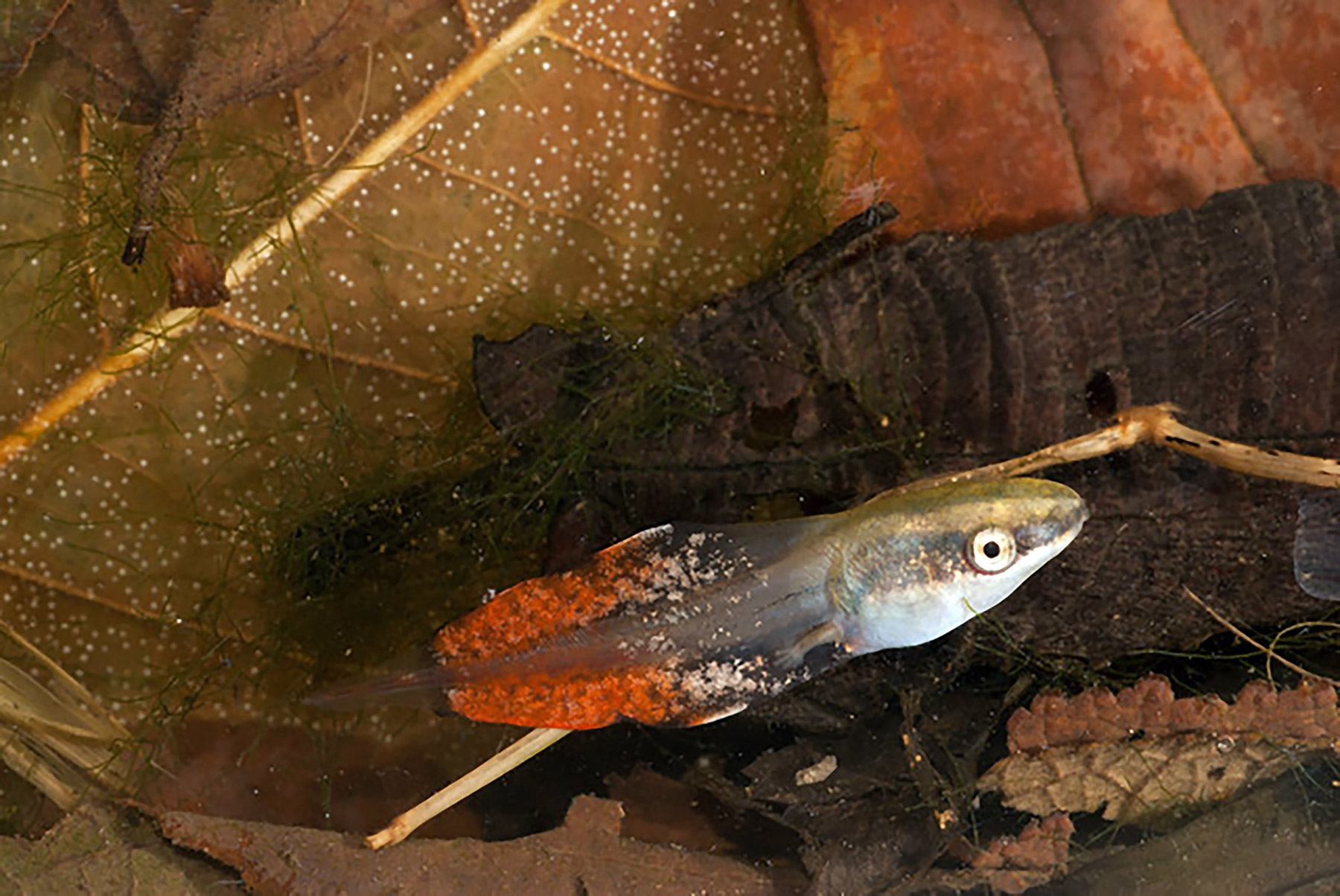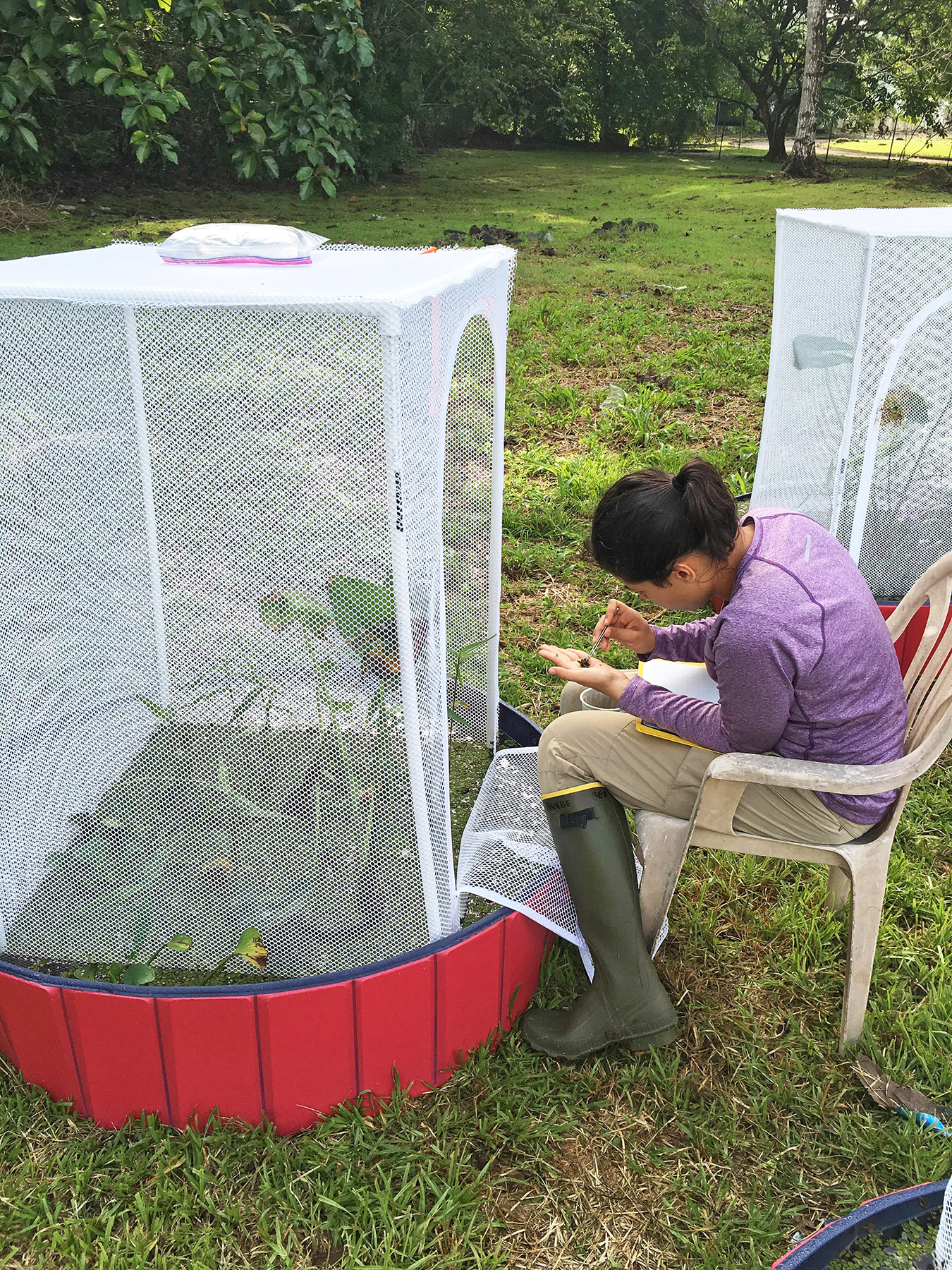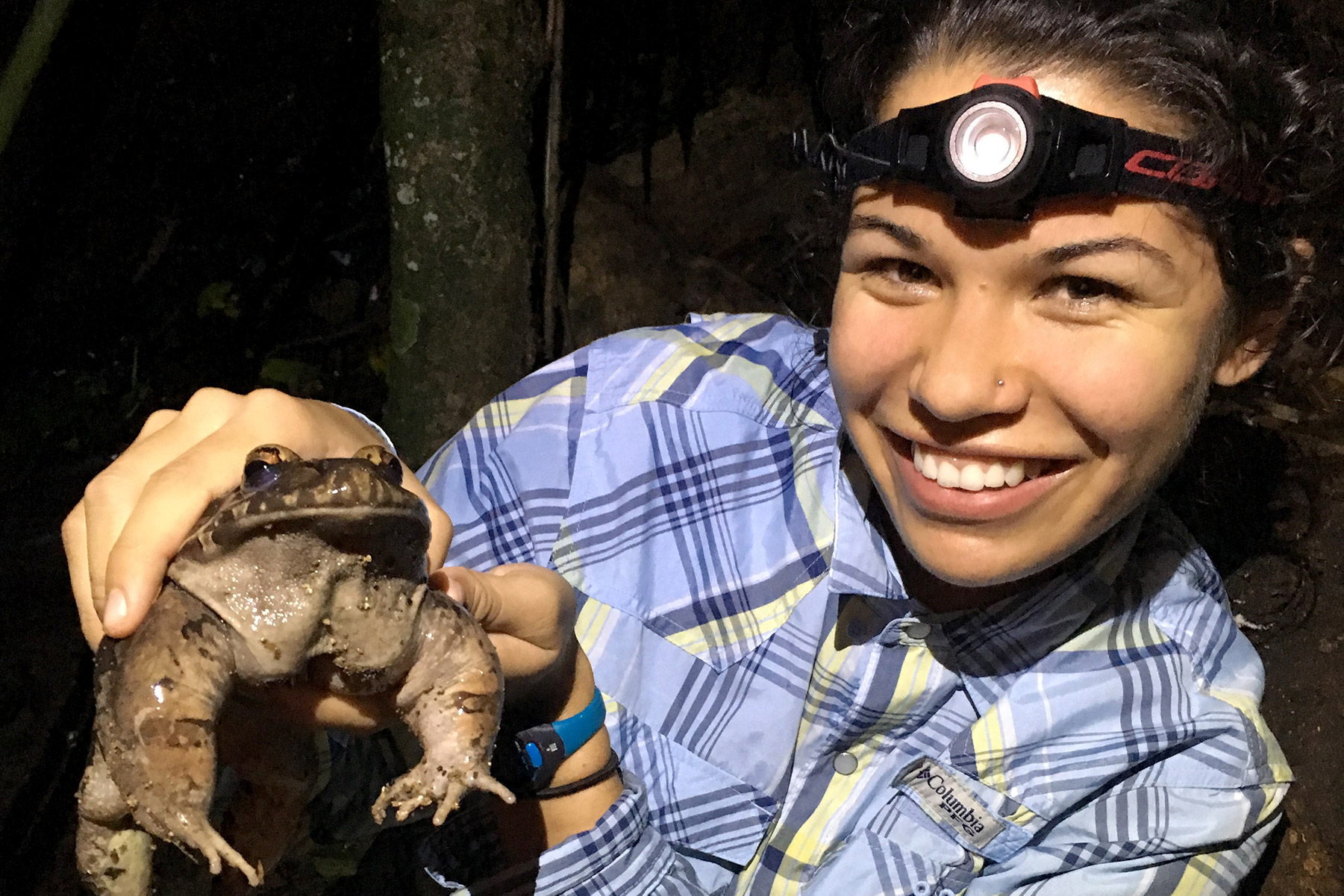Vassar Prof, Student, Shed Light on How Tadpoles Avoid Predators
Vassar Prof, Student, Shed Light on How Tadpoles Avoid Predators
Like many other creatures, some tadpoles are able to alter their appearance, a phenomenon called plasticity, to avoid predators. But do these tadpoles also alter their behavior depending on which predators are threatening them? That was a question Vassar Assistant Professor of Biology Justin Touchon and one of his students, Phoebe Reuben ’17, set out to answer when they conducted a study in the summer 2016 at the Smithsonian Tropical Research Institute in Panama. Their research was published April 14 in the scientific journal Proceedings of the Royal Society B.

In their paper, Touchon and Reuben found that the tadpoles of the tropical tree frog Dendropsophus ebraccatus did adapt their behavior depending on which of their principal predators, dragonfly larvae or fish, were most threatening. The tadpoles didn’t move much when exposed to threats from dragonfly larvae, an apparent effort not to attract attention. When threatened by fish, however, the tadpoles swam much faster and more frequently to elude capture.
The tadpoles also changed their appearance in response to these two predators, a phenomenon Touchon had observed in previous research. When living in water where fish were a threat, the tadpoles grow a skinny clear tail, while those threatened by dragonfly larvae grow a large colorful tail. The skinny, clear tail makes the tadpoles harder to find, Touchon hypothesizes, while the large colorful tail induces the dragonfly larvae to attack the tail rather than the head, making survival from an attack more likely.

However, Touchon and Reuben also learned that behavioral plasticity was not correlated with color. For example, tadpoles that responded most strongly in tail shape did not necessarily have a strong response with behavior, and vice-versa.
Touchon said the results of the study imply that different types of plasticity operate independent of one another, giving prey animals like tadpoles the ability to “mix and match” the way they respond to predators in the wild. This also implies that plasticity in behavior and in morphology or color have evolved separately, even though developing a big colorful tail and reducing the tadpole’s swimming activity occur in response to the same predator—in this case a dangerous dragonfly larvae waiting to grab a snack swimming by in the pond.

Reuben, who has been working at Weill Cornell Medicine in New York City since she graduated, will begin graduate studies in disease ecology at Tulane University in the fall. She said the research she conducted with Touchon as an undergraduate had helped lay the groundwork for her postgraduate work. “The experience of working with Dr. Touchon at the Smithsonian Research Institute was incredible,” she said. “Meeting this community of scientists and being exposed to the breadth of work happening there really helped me to define my own research interests. Independent of our findings, this project helped me to better understand that way that research questions evolve and the process of publishing a paper.”
Two other Vassar students, Annie Innes-Gold ’18 and Hubert Szczygiel ’18, accompanied Touchon and Reuben to Panama in 2016. According to Touchon, Innes-Gold, now a graduate student at the University of Hawaii at Manoa, has subsequently published some of her research, and Szczygiel returned to Panama to conduct further research after he graduated from Vassar. “The Smithsonian is the premier institute in the world for tropical biology, so this was an amazing opportunity for these students,” said Touchon.

“Vassar gives us the resources to do this kind of research,” Touchon added, “and the work they performed there speaks to the caliber of Vassar students.”